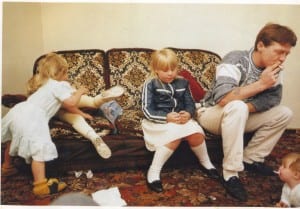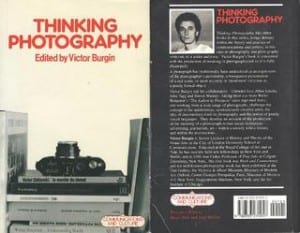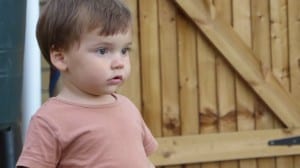Upon deciding to respond to the word ‘Division’ in my final project, I decided that I wanted to explore the divisions of family generations through portraiture. To broaden my knowledge of family photography and portraiture in general I researched numerous practitioner’s work. One particular piece of portraiture that caught my attention was Jill Greenberg’s ‘End Times’.
This particular piece of work caught my attention due to the fact I planned to photograph my two year old nephew, therefore ‘End Times’ was a no brainer to look at as the subject matters of all portraits are toddlers. However it was what Greenberg was doing behind the camera that intrigued me even more. The expressions that the children display are in fact provoked by handing them a lollipop and then taking it away. I liked the idea of provoking the subject and not just simply having a photograph without a narrative. This directly influenced me into deciding that I would ask each family member to think about what family means to them before taking the photograph.
Upon making the decision that I would provoke the subject’s emotions when taking the photograph, I next needed to decide where the setting for these photographs would be. I came across a piece of work by Nick Waplington entitled ‘Living Room’.
Waplington chose to photograph friends, neighbours and members of his own family in the immediate surroundings. I was drawn into the simplicity of this. Without a studio or fancy setting Waplington had constructed photographs that were rife with narrative and character. From this I was influenced into setting my portraits too in the immediate surroundings, which ironically also ended up being a living room. Furthermore the lighting and tone of these photographs evoke nostalgia. Due to the fact I will be asking my subjects to select on memories, I plan to give a similar lighting and tone to my won photographs.
Beyond professional photographers I have also looked into writers and their books, in particular Victor Burgin’s 1982 ‘Thinking Photography’. I believed it was fundamental not to simply look at photographers and their images but to research into the theory and ideas that support them. I specifically chose to look at Chapter 4 ‘The invention of Photographic Meaning’ by Allan Sekula.
Sekula states ‘a photograph is an utterance of some sort, that it carries, or is, a message. However the definition also implies that the photograph is an ‘incomplete’ utterance, message that depends on some external matrix of conditions and presuppositions for its readability. That is, the meaning of any photographic message is necessarily context-determined. We might formulate this position as follows: a photograph communicates by means of its association with some hidden, or implicit text; it is this text, or system of hidden linguistic propositions, that carries the photograph into the domain of readability.’ After reading this I believe I know have a greater understanding on how an audience interprets an image and how external meaning can change the audience’s perception instantly. From this I aim to produce images with a sincere narrative that adds to the meaning of the piece.
Along with this I was also influenced by some of my own photographs. At the beginning of summer we had a family BBQ, at which I took numerous images with my camera. However there was one image in particular that stood out for me, of my nephew.
To this day I am unable to put a finger on one thing in particular that makes this photograph so mesmerising to me. Starting with the subject, I am instantly drawn to his expression. This image still leaves me intrigued, have I simply captured him mid thought or mid observation? I love the positioning of the subject on the left hand side of the frame as it as if the right side is being filled by his thought. Having planned to provoke thought in my subjects in my final portraits, I made the decision to position some of my subjects to the left of the frame to follow the rule of thirds and previously mentioned reasons; this is explained further on my ‘Final Project: ‘Blossom” page. Also I was drawn to how he truly is the focus on the frame, with the remainder of the frame out of the focus. As my project is personal to the subjects, I plan to use the aperture to bring crisp focus on my subject while blurring the background, tis reinforcing the importance of the subject.
Although I decided to have my subjects looking away from the camera, when it came to producing the photographs I felt it was important to have alternative images to consider, thus allowing me to develop my images further.
For example here is an image of my Grandad with him sitting face on with a direct address to camera. I found that once I provoked the subject into thinking about what family means to them, they were somewhat put off by the camera, hence not allowing the subject to completely think about what I had asked them too. Therefore I chose to take the photograph from a side view and with the subject looking away from the camera. This proved to relax the subject more and hence I chose this for the final portrait.








